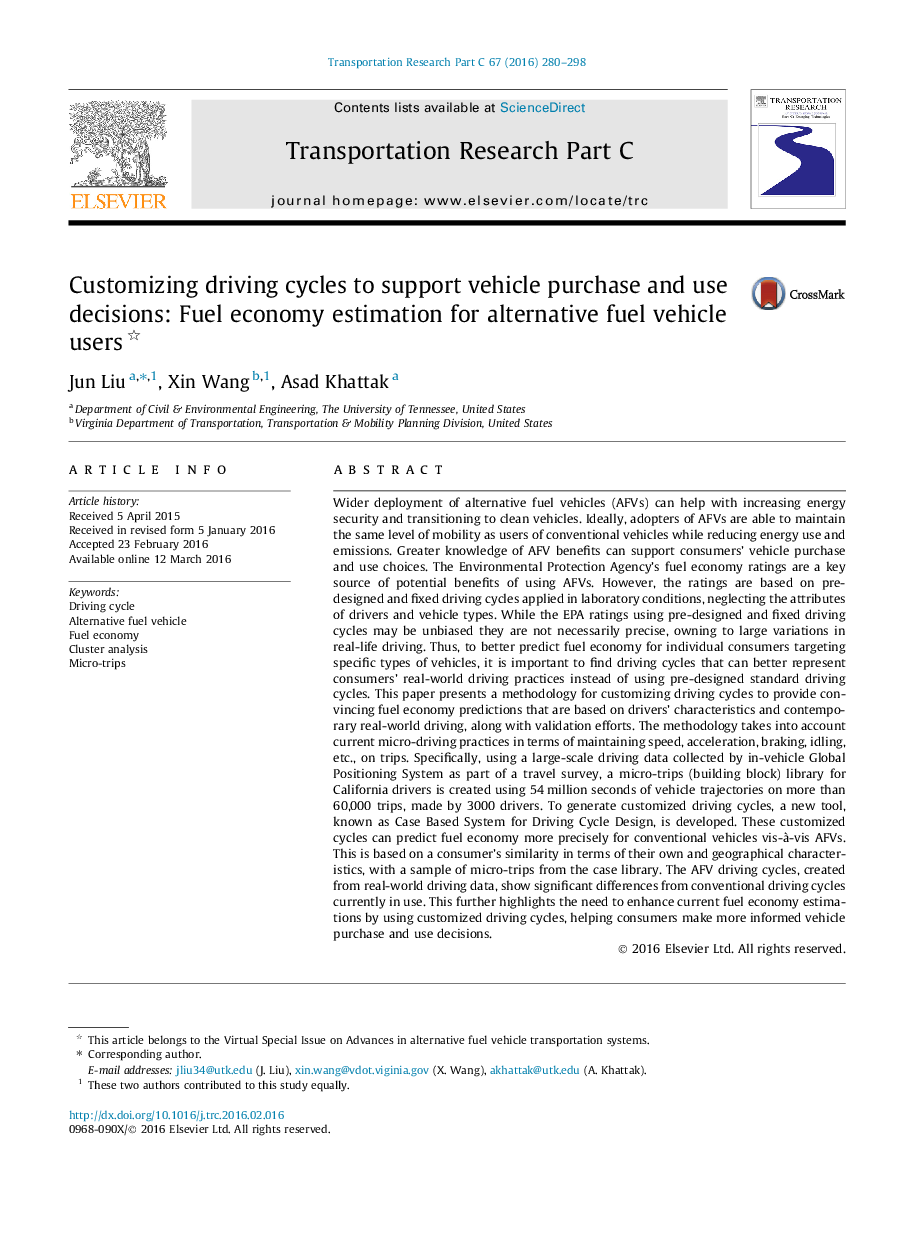| Article ID | Journal | Published Year | Pages | File Type |
|---|---|---|---|---|
| 6936427 | Transportation Research Part C: Emerging Technologies | 2016 | 19 Pages |
Abstract
Wider deployment of alternative fuel vehicles (AFVs) can help with increasing energy security and transitioning to clean vehicles. Ideally, adopters of AFVs are able to maintain the same level of mobility as users of conventional vehicles while reducing energy use and emissions. Greater knowledge of AFV benefits can support consumers' vehicle purchase and use choices. The Environmental Protection Agency's fuel economy ratings are a key source of potential benefits of using AFVs. However, the ratings are based on pre-designed and fixed driving cycles applied in laboratory conditions, neglecting the attributes of drivers and vehicle types. While the EPA ratings using pre-designed and fixed driving cycles may be unbiased they are not necessarily precise, owning to large variations in real-life driving. Thus, to better predict fuel economy for individual consumers targeting specific types of vehicles, it is important to find driving cycles that can better represent consumers' real-world driving practices instead of using pre-designed standard driving cycles. This paper presents a methodology for customizing driving cycles to provide convincing fuel economy predictions that are based on drivers' characteristics and contemporary real-world driving, along with validation efforts. The methodology takes into account current micro-driving practices in terms of maintaining speed, acceleration, braking, idling, etc., on trips. Specifically, using a large-scale driving data collected by in-vehicle Global Positioning System as part of a travel survey, a micro-trips (building block) library for California drivers is created using 54Â million seconds of vehicle trajectories on more than 60,000 trips, made by 3000 drivers. To generate customized driving cycles, a new tool, known as Case Based System for Driving Cycle Design, is developed. These customized cycles can predict fuel economy more precisely for conventional vehicles vis-Ã -vis AFVs. This is based on a consumer's similarity in terms of their own and geographical characteristics, with a sample of micro-trips from the case library. The AFV driving cycles, created from real-world driving data, show significant differences from conventional driving cycles currently in use. This further highlights the need to enhance current fuel economy estimations by using customized driving cycles, helping consumers make more informed vehicle purchase and use decisions.
Related Topics
Physical Sciences and Engineering
Computer Science
Computer Science Applications
Authors
Jun Liu, Xin Wang, Asad Khattak,
